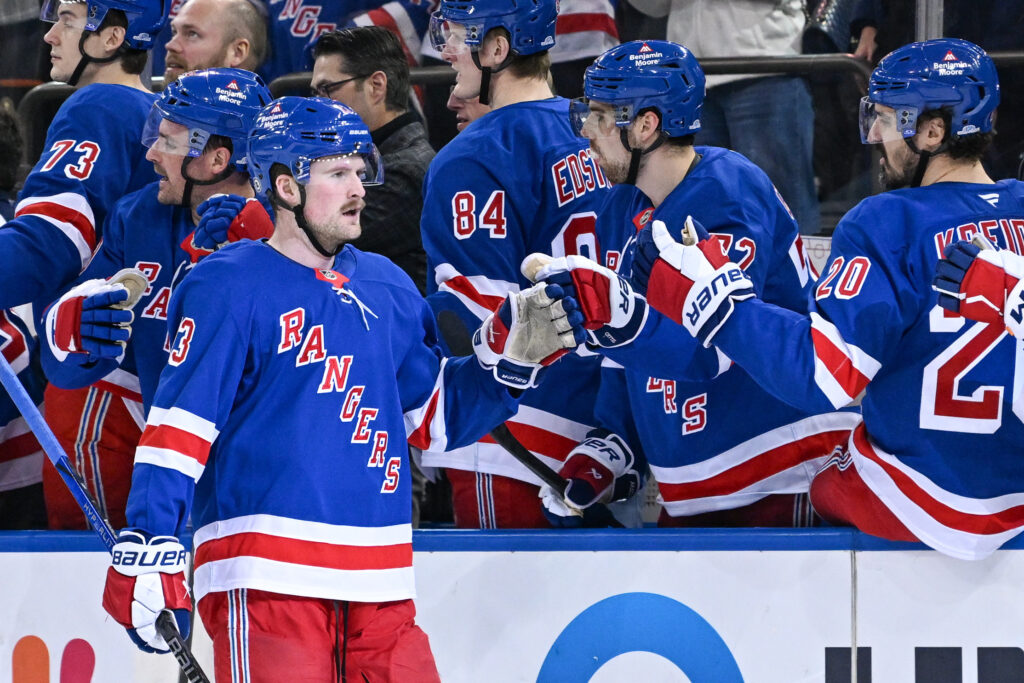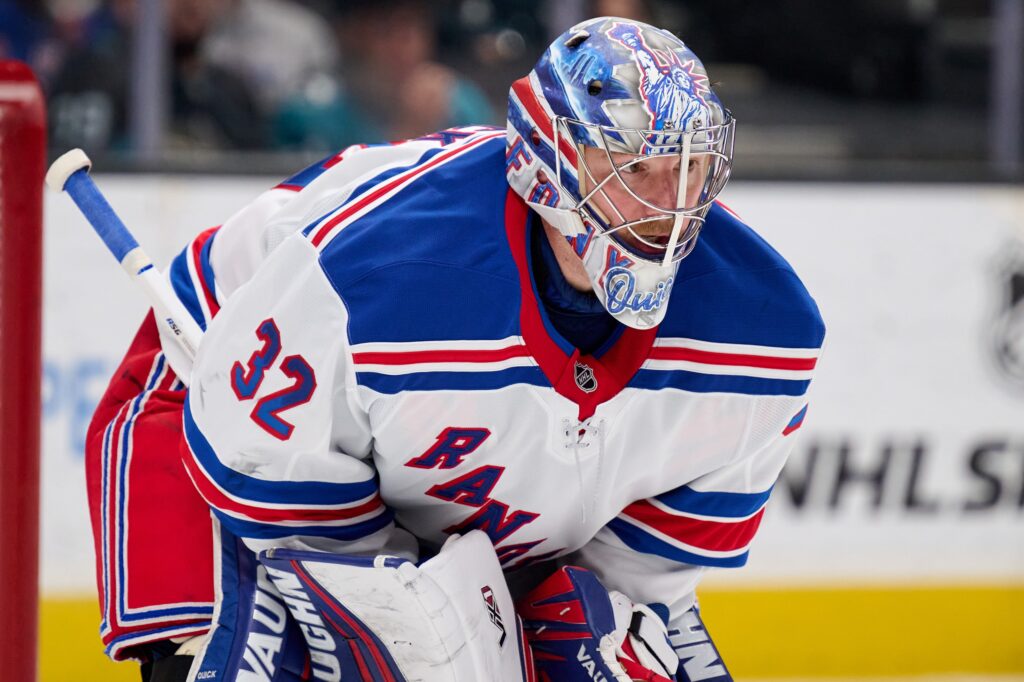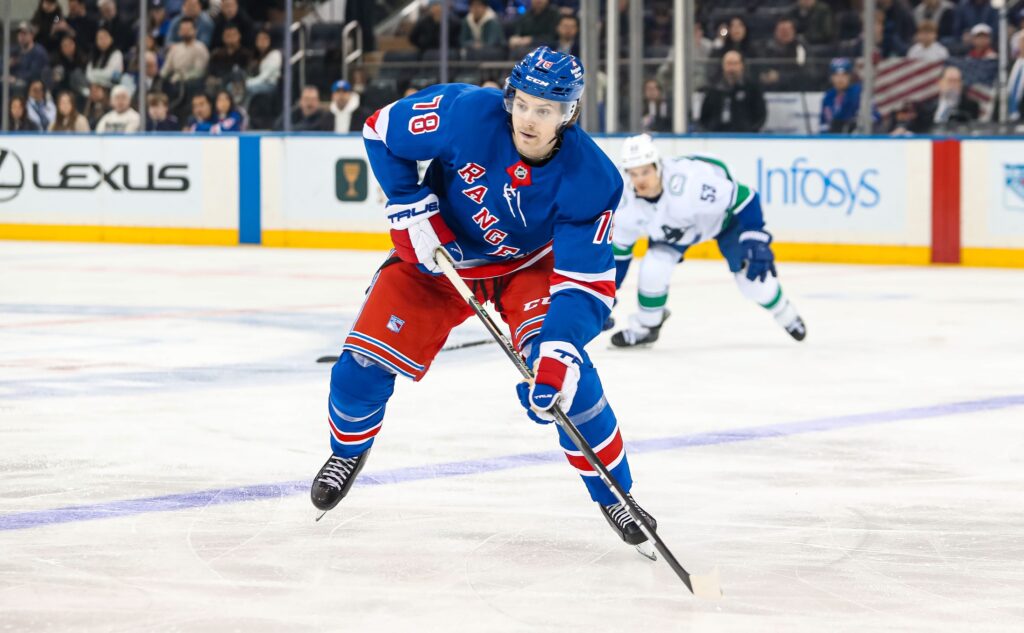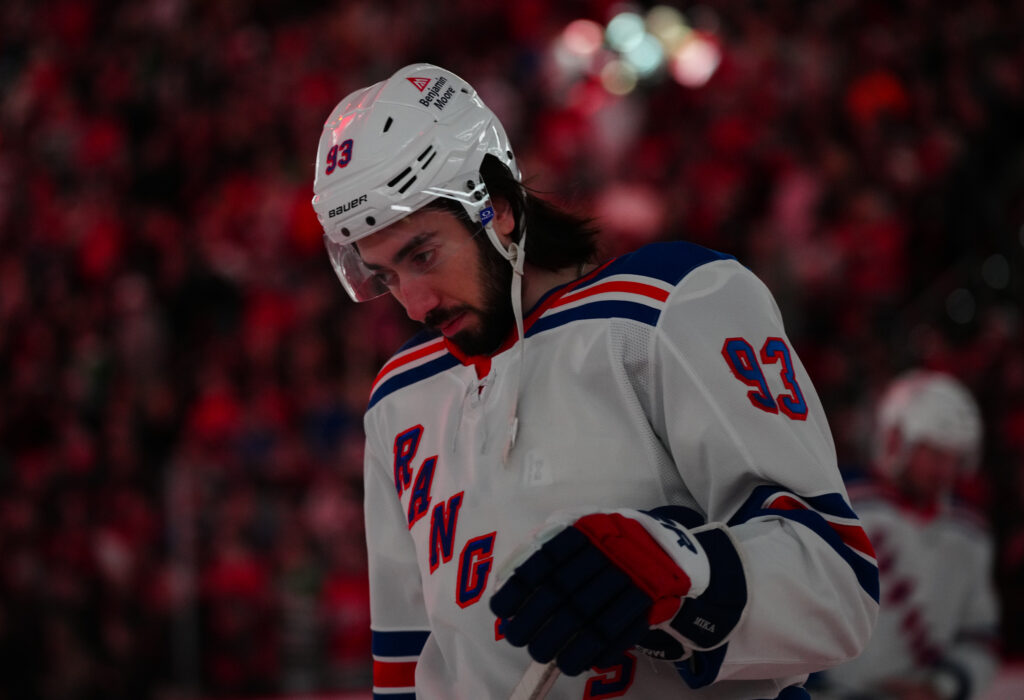Well, folks, here we are in the dog days of summer, and while most of the hockey world is enjoying a well-deserved break, us scribes are already peering into the crystal ball, especially when it comes to a franchise like the New York Rangers. After a truly baffling 2024-25 season saw them miss the dance, the air in the Big Apple is thick with a mixture of cautious optimism and genuine, stomach-churning worry. The “dysfunction” that submarined last year’s campaign is (thankfully) not expected to repeat – a new bench boss in Mike Sullivan should take care of that. But make no mistake, the path back to true contention, let alone a deep playoff run, is fraught with peril.
Let’s not sugarcoat it; the Rangers are facing a gauntlet of issues that, if not addressed with surgical precision, could leave them spinning their wheels for years to come.
The Aging Warhorse: Mika Zibanejad’s Steep Decline
This one is perhaps the most glaring red flag, flashing brighter than a Times Square billboard. Mika Zibanejad, once the dynamic engine of the Rangers’ offense, has seen his production plummet faster than a lead balloon. From a career-high 91 points just two seasons ago, he dipped to a measly 62 last year – his lowest non-COVID full season output since 2017-18. He’s 32 now, and the whispers around the league are getting louder: his massive contract, laden with an air-tight no-movement clause through 2030, is rapidly becoming a certified albatross.
Also on the EDGE – Are the 2025-26 Rangers Rebuilt or Just Rearranged?
We’re talking about one of the worst, if not the worst, contracts in the entire NHL. His 5-on-5 production has cratered, and the thought of shifting him to first-line right-wing just to shoehorn him into a role feels like a desperate move that would inevitably stifle younger, more dynamic talent. This isn’t just a concern; it’s a potential franchise-ruining anchor, dragging down any hope of genuine cap flexibility. You’re locked into a declining player for years, and there’s no easy out. Ouch.
Lafreniere: The Unfulfilled Promise Continues
Remember when Alexis Lafreniere was supposed to be the savior? The undisputed first overall pick, the future cornerstone? Well, here we are, another season gone by, and the “breakout” is still more myth than reality. Fresh off an uneven 2024-25, he’s now embarking on a seven-year, $52.15 million contract. That’s big boy money, folks, and with it comes big boy expectations. We’re talking 30 goals, 70 points – the kind of production you expect from a top-tier player.

But has he consistently delivered? Not even close. His offensive production last year “left much to be desired.” It’s not just a concern anymore; it’s a legitimate worry that the former phenom might never live up to his draft pedigree. The clock is ticking, and that contract is looking heavier by the day.
The Breadman’s Playoff Peril
Artemi Panarin, the “Breadman,” is a wizard in the regular season. His offensive genius is undeniable. But when the chips are down, when the stakes are highest, his playoff performances have been, frankly, alarming. “Terrible runs in 2020 and 2023” are not the kind of bullet points you want on your superstar’s resume. His $11.6 million contract expires after the upcoming season, and with a full no-movement clause in hand, he becomes an intriguing, if precarious, trade candidate if the Rangers falter again. Can they afford another disappearing act when it matters most? The answer is a resounding no.
Blue Line Blues: A New Look, Same Old Worries?
For years, defensive zone play has been the Rangers’ Achilles’ heel, a gaping wound that just won’t heal. They’ve completely retooled the defense corps, with several of their prominent D-men from last season now gone. On paper, it’s a fresh start. But dig a little deeper, and the cracks begin to show. Beyond Adam Fox, a bona fide star, and the steady presence of Vladislav Gavrikov, the depth on the blue line “leaves much to be desired.”
The names Will Borgen, Urho Vaakanainen, Carson Soucy, and Scott Morrow don’t exactly inspire confidence as a collective. And let’s talk about Carson Soucy. Acquired in a trade, he “didn’t look great in his short time with the team last season,” appearing slow and uncomfortable. Paying him $3.25 million for a likely third-pair role is, to put it mildly, suboptimal. Then there’s Braden Schneider, a natural right-hander, being shoehorned onto the left side. These aren’t minor quibbles; these are fundamental concerns that suggest the “new-look defense” might just be a fresh coat of paint on a crumbling foundation. If no further moves are made, the defensive corps could be a “major area of concern.”
The Old Man and the Crease: Quick’s Last Stand
Goaltending is often the backbone of any successful NHL team, and while Igor Shesterkin is undoubtedly a world-class netminder, what happens when he needs a breather? Jonathan Quick, entering his age-40 season, is a huge question mark. Last season, he wasn’t as sharp as the one prior, and the “Jonathan Quick is finished” alarm bells are ringing loud and clear. He needs to provide around 25 starts and play well in most of them for this team to even sniff contention. That’s a huge ask for a goaltender on the wrong side of 35.

Beyond Quick, the system is barren. Dylan Garand is viewed as merely a “marginal backup” at best, and the other prospects aren’t exactly lighting the world on fire. The “biggest weakness” in the organization might just be between the pipes, behind Shesterkin.
Cap Strapped and Stuck: The Contract Conundrum
This is where the Rangers’ future truly feels constrained. Over 66% of their cap space is tied up in just seven players, many of whom are signed deep into their 30s; Zibanejad, Gavrikov, and J.T. Miller all until after their 35th birthdays. This isn’t just “little cap flexibility”; it’s a financial straitjacket, even with a rising salary cap.
Also on the EDGE – Blueshirts’ Crossroads: Burning Questions for the 2025-26 Rangers
We’ve already touched on Zibanejad’s “franchise-ruining contract.” But let’s also shine a light on Carson Soucy’s $3.25 million deal, a “poor value” given his diminished play. The Rangers’ “bridge deal habit” with young players like Will Cuylle is another head-scratcher. Opting for short-term deals now only means higher costs down the road, a “bad cap strategy” when you’re already beholden to aging veterans.
And speaking of aging veterans, while J.T. Miller ($8 million) and Vincent Trocheck ($5.625 million) currently offer value, their long-term deals into their mid-30s are ticking time bombs. The grim reality? The Rangers are “locked into a core that just missed the playoffs and isn’t getting any younger.” This isn’t a team “built to evolve”; it’s a team “built to hope the core gets it right, before it’s too late.”
The Black Hole of the Third Line
This might seem less glamorous than superstar contracts or defensive overhauls, but the third line is identified as “the most legitimate—and, ultimately, most damaging—potential issue.” Right now, it’s a “mess,” lacking a “true identity” and “full of question marks.”
Potential centers Juuso Pärssinen and Jonny Brodzinski are inconsistent. Newcomer Taylor Raddysh’s track record is “spotty.” And relying on unproven prospects like Brennan Othmann and Gabe Perreault for regular third-line duty is a huge gamble. Remember, the power play was a “liability” last year, and a dysfunctional third line only exacerbates offensive struggles. This is a gaping hole that needs to be filled, and quickly.
The Kids Aren’t Alright… Yet
Finally, the hope for the future – the prospects. The concern here is that the “kids aren’t ready for prime time.” Gabe Perreault and Brennan Othmann, while promising, are not “slam dunks to make an immediate impact.” Perreault needs to earn the coach’s trust for a top-six or regular third-line role, and Othmann has struggled in limited NHL games.

Other prospects like Scott Morrow need to clean up their mistakes, EJ Emery needs more consistency in his puck game, and as discussed, Dylan Garand’s future as an NHL backup is uncertain. While the prospect pipeline isn’t “poor,” it “pales in comparison to the New York Islanders'” and isn’t exactly brimming with immediate impact players. This means the Rangers can’t simply rely on a wave of youth to solve their problems.
The Bottom Line: A Long, Hard Road Ahead
The New York Rangers are at a crossroads. The sting of missing the playoffs last year should serve as a stark wake-up call. They have a new coach, which is a start, but the underlying issues are deep and systemic. From aging stars on crippling contracts to a questionable defensive corps, a fragile goaltending situation, and a third line that’s a black hole, the challenges are formidable.
It’s going to take more than just hope. It’s going to take shrewd management, bold decisions, and perhaps a bit of luck to navigate these choppy waters. Otherwise, the “Empire State of Concern” might just become the “Empire State of Disappointment” for a long, long time.
Created with the aid of Gemini AI
